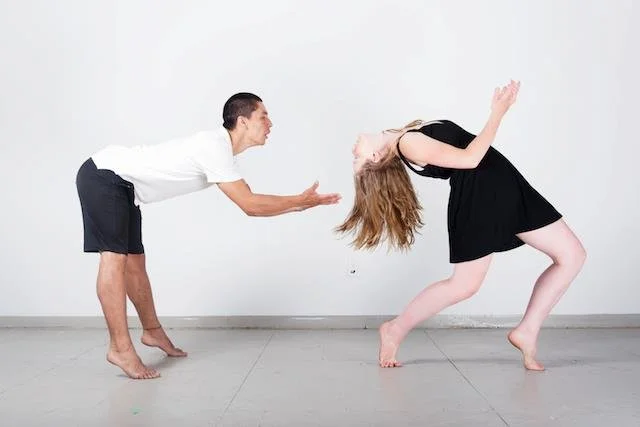When a Dance School Decides You’re Not Enough
I was recently in a therapy working on my belief that I will never be good enough at mastering the CBT tools. That I will never be a perfect therapist, essentially.
Through a CBT tool called the emotional link (or in French, “Pont d’Affect”— I don’t think there‘s such a catchy name for it in English), I was taken back to the Program Director’s office at the School of Toronto Dance Theatre, sitting across from Pat Fraser in 2010.
The year I wasn’t invited back for my third year at the School of Toronto Dance Theatre.
I had worked hard. I showed up. I passed auditions. I was accepted. I paid tuition. I gave myself to the process. But after two years of training, the school decided I didn’t make the cut. I was told — implicitly, and devastatingly — that I wasn’t good enough to continue into third year.
And it’s not like I couldn’t dance— I was a very strong dancer. But the reputation of the students who graduated from the school was to be preserved, for some reason. At the cost of the wellbeing of the fragile artists they claimed to cultivate and “nourish”.
At the time, I swallowed it. Internalized it. Dancers are taught to take criticism with grace, to keep quiet, to try harder next time. But some feedback isn’t feedback — it’s a severance. And it leaves a mark.
Now, years later, I realise that being removed from that program didn’t just mean I couldn’t dance there. It left me wondering whether I deserved to dance anywhere. It told me that even when I work hard, even when I care deeply, even when I want something enough to show up for it fully — I might still be cast aside.
And here’s what I want to say now:
How dare a dance school decide whether or not someone deserves to express themselves through movement?
Dance is not just a profession. It’s a language, a medicine, a form of selfhood. For so many of us, it is the only way we know how to speak the truth of what lives inside us. How can an institution — even one that prides itself on being “nourishing” and “progressive” (compared to ballet schools) — take that away?
There is a myth that once a dancer is accepted into a professional program, they’re being trained for excellence — and if they fall short, it’s fair to let them go. But what’s rarely acknowledged is the human cost. We’re not machines. We’re young people, often carrying trauma, identity struggles, and a desperate need to belong somewhere. Dance school is not just school — it’s home, family, mirror, and proving ground all in one. Being told we don’t belong there doesn’t feel like critique. It feels like abandonment.
I don’t know whether the policies at STDT have changed. I don’t know whether the teachers I had — Darryl, The Two Pats, Rose, Helen, Wendy — would see things differently now. I don’t know if they’ll read this.
I’m not writing to shame anyone. I’m writing it so that it might be read by the directors, the teachers, the evaluators — those who sit across from young dancers with the power to determine whether they stay or go. I’m writing it for the students who have felt the same, who may stillk be dealing with underlying fears of rejection fifteen years later.
If a dancer shows up every day, open and willing to learn, they should be allowed to stay and dance. It’s dancing, for goodness’ sake. It’s not heart surgery.
Growth doesn’t always look like technical perfection. Sometimes it looks like healing. Sometimes it looks like trembling vulnerability in a plié, or the way someone holds their own gaze in the mirror for the first time in months. Sometimes it’s the exercise where Fiona got us to look our classmates in the eyes one by one?
You never know what someone is dancing through.
If you’re in a position of influence within a dance school — or any creative institution — I hope you’ll ask yourself:
Do we value excellence over humanity? And at what cost?
Let’s do better. Let’s keep people dancing.



